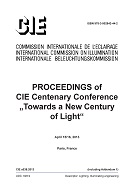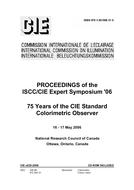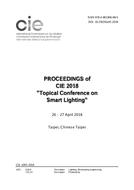Description
This volume contains short Technical Reports, Research Notes and Reporters’ Reports prepared by various Technical Committees and Reporters within Division 6. In part they were published in the “CIE Journal” between 1986 and 1988.
106/1 Determining ultraviolet action spectra
Background information on photobiological action spectra is provided as a general introduction to the five previously published research notes that appeared in the CIE Journal and are now conveniently republished as a CIE COLLECTION in Photobiology and Photochemistry. This note also provides current information on international guidance related to exposure to ultraviolet radiation, which supersedes earlier CIE recommendations regarding action spectra for photokeratitis and photoconjunctivitis. This Research Note was prepared by D. Sliney, USA, Division 6 Director
106/2 Photokeratitis
This Research Note was originally published in CIE-Journal, Vol. 5, No. 1, 19-23, 1986.Ultraviolet radiation may cause photokeratitis, a painful inflammation of the cornea of the eye. The spectral responsivity for photokeratitis – the action spectrum – follows a characteristic curve, the maximum of which lies at 288 nm according to Coga and Kinsey, at 270 nm according to Pitts et al. The threshold dose is between 50 and 100 J/m2.
The threshold exposure times are evaluated, within the range of validity of Bunsen-Roscoe law, for some sources. The data obtained by various authors are compared and the discrepancies are discussed.
106/3 Photoconjunctivitis
This Research Note was originally published in CIE-Journal, Vol. 5, No. 1, 24-28, 1986. Ultraviolet radiation can cause photoconjunctivitis, a painful inflammation of the conjunctiva, the tissue coating the eyelid and part of the eyeball.
The spectral responsivity of photoconjunctivitis – the action spectrum – follows a characteristic curve, whose maximum lies, according to Schulze, at 260 nm, and resembles closely the absorption spectrum of DNA damage . The threshold radiant exposure (threshold dose) is about 50 J/m2.
The opinion expressed by several authors, that the same action spectrum should exist for photoconjunctivitis and photokeratitis, cannot be shared by CIE Division 6, since the cornea and the conjunctiva of the human eye are different from both anatomical and histological standpoints.
106/4 A reference action spectrum for ultraviolet induced erythema in human skin
This Research Note was originally published in CIE-Journal, Vol. 6, No. 1, 17-22, 1987.Erythemal action spectra have been the subject of experimental and theoretical interest for over 50 years. CIE considered the adoption of the so-called standard erythemal curve based on the results of the work by Coblentz in 1934. Although apparently never “officially” adopted by the CIE this curve is frequently cited and used in comparative studies of the erythemal efficacy of light sources. There are apparently substantial differences between the data determined recently and those represented by the “standard erythemal curve”. CIE Division 6 proposed a reference action spectrum based on a statistical analysis of the results of minimum erythemal dose (MED) studies. The data contained in the action spectrum should be used only as spectral weighting factors to indicate the approximate relative erythemal efficacy of a light source (between 250 and 400 nm).
The proposed action spectrum takes safety aspects of radiation into account. Apart from this, Division 6 considers adopting a “photobiologically realistic” action spectrum.
106/5 Photobiological effects in plant growth
This Research Note was originally published in CIE-Journal, Vol. 6, No. 2, 5159, 1987.This report is concerned with the effect of optical radiation on plants and the possibilities of optimising the use of electric light sources in controlled plant growth facilities.
A wider range of practical experimental work in this area is reviewed in the article and its references. What becomes clear is the absence of direct correlation between photosynthesis intensity and plant productivity. The report concludes that the principles that have been established need to be extended by a search for the optical radiation parameters for all “photobiological receptors”, i.e., plants.
106/6 Malignant melanoma and fluorescent lighting
This Research Note was originally published in CIE-Journal, Vol. 7, No. 1, 29-33, 1988. An epidemiological study carried out in Australia in 1982 suggested a link between malignant melanoma (a form of skin cancer) and occupational exposure to fluorescent lighting. This research note, produced by CIE Technical Committee 6-09, reviews the work that has been carried out since then which attempted to check this association.
The conclusion is that the available evidence does not support the existence of any substantial association between melanoma risk and exposure to fluorescent lighting. However, it is impossible to exclude the existence of a risk and further research is warranted.
In view of the well known link between exposure from short UV radiation and several skin disorders among which is perhaps melanoma, the Committee evaluated the yearly doses of UV radiation (in erythemal value) received from fluorescent lighting. These doses are normally not above a few percent of the doses received from the sun. It may be prudent to keep the UV output of the lamps low enough so that such a condition is likely to be always realized.
106/7 On the quantification of environmental exposures
Limitations of the concept of risk-to-benefit ratio Scientific knowledge on risks and benefits of optical radiations has increased markedly during the past decades. The ideal to integrate all our knowledge on effects of light and UV radiation into one risk-to-benefit ratio to characterize a radiation is, however, remote. With increasing knowledge, the complications appear to increase and the final solution seems far away.
With several benefits and even more risks, each in a few variants, there is a need for a multitude of risk-to-benefit ratios. The best we can hope to achieve in the foreseeable future are separate analyses, each for one benefit and one risk.
For many risk-benefit combinations, we need much more knowledge than the action spectra. The most obvious requirements are dose-effect relationships, descriptions of the way in which multiple exposures cooperate in causing the final effect and, in some cases, interactions of radiations with different wavelengths. In short, we need more photobiology.This Report was prepared by J. C. van der Leun, Netherlands.
106/8 Terminology of photosynthetically active radiation for plants
This report provides guidelines for terminology to be utilized in describing electromagnetic radiation regulating photosynthesis by plants. These guidelines have been developed because scientists in different plant societies have evolved varied terminology and wavelengths for the radiation reported in plant research.
The guidelines state that photosynthetically active radiation (PAR) for plants should be reported as the total photon exposure in the 400-700 nm waveband. Instantaneous measurements made with a flat or hemispherical sensor should be reported as photosynthetic photon flux density (PPFD) in mol.m-2.s-1, whereas instantaneous measurements made with a spherical sensor should be reported as spherical photosynthetic photon flux density (SPPFD) and reported also as mol.m-2.s-1. Integrated photon exposures made with a flat or hemispherical sensor should be reported as the exposure of photosynthetically active photons (PAP) as mol.m-2 and with spherical sensors as the exposure of spherical photosynthetically active photons (SPAP) also as mol.m-2.
Product Details
- Published:
- 01/01/1993
- ISBN(s):
- 9783900734466
- Number of Pages:
- 56
- File Size:
- 1 file , 860 KB




